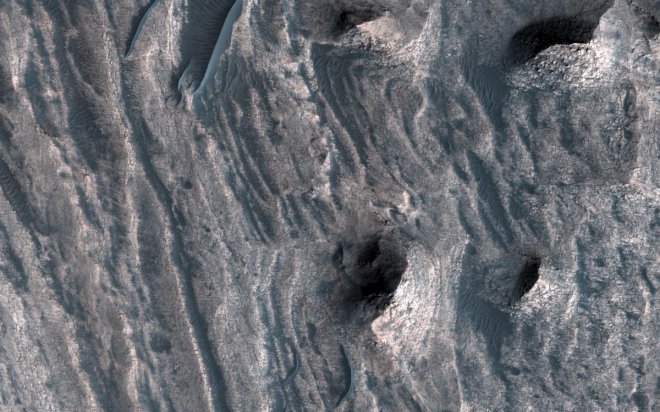
The European Space Agency's Mars Express and NASA's Mars Reconnaissance Orbiter (MRO) have found layers of hydrated sulfate salts in the giant canyons region of Mars.
The spectral measurement instruments of the Martian vehicles identified the hydrated sulfate salts, such as gypsum, and kieserite which could be used as fertilizers for plants in future Martian colonies. These minerals are usually present in regions of Earth which has wet environments. Scientists believe that these deposits were formed inside water.
These salt layers, also known as Ceti Mensa deposits, are found as deep red colors layers. The Viking orbiter, which was exploring the planet caught the images of the region in the 1970s. It was located in west Candor Chasma region in the north of the Valles Marineris.
The interiors layers of the Ceti Mensa would have sedimentary deposits accumulated over time. Some of the newly found layers were previously very small to view. Fractured surfaces and regions which are eroded into knobs and regions covered with younger dark sand dunes were found recently.
Ceti Mensa could be found as a plateau located at 3 kilometers above a canyon floor. The dust and sand formed from volcanic eruptions are believed to have formed it in the region which was filled with water.
The red tint color is believed to have resulted from crystalline ferric oxide. The scientists believe that this material is formed from exposure to heat or water or both.
Mars Express OMEGA (Visible and Infrared Mineralogical Mapping Spectrometer) and MRO CRISM (Compact Reconnaissance Imaging Spectrometer for Mars) instruments have helped in the detection of the minerals on the Martian surface.
The MRO had earlier observed sand dunes and dust deposits in the Proctor Crater, thought to be formed by wind movements, made of small basalt particles as a formation of light-toned ripples termed as transverse aeolian ridges (TAR).
These missions had also made observations of glaciers in the middle latitude regions of the planet. Even though proof of an active flow of glaciers is not strong, they could still be interpreted as remnants of water flow millions of years ago, said scientists.








